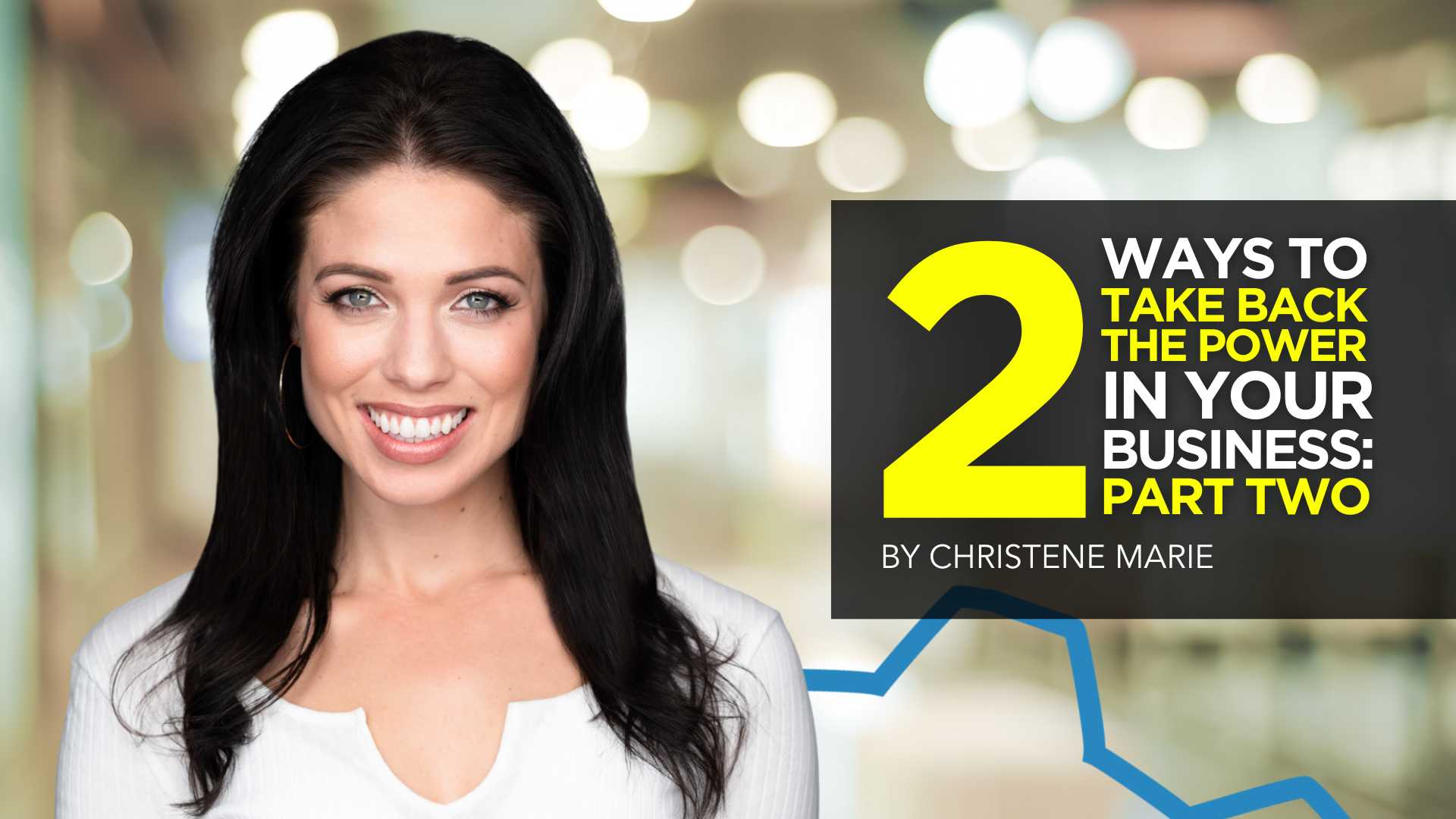MARKETING
40+ Mistakes Derailing Your Content Team (and How To Fix Them)

No content marketer works alone. Even if people who make up a content team of one still engage with colleagues, clients, and contractors. And everyone reports to a boss.
Great, productive interactions and collaboration feel exhilarating and inspiring. But not all collaboration falls into that category.
Challenges always arise when people come together (virtually or physically) to strategize, brainstorm, create, publish, and promote content. Mistakes involving resources, content operations, and more can derail even the most promising projects.
We asked the speakers at Content Marketing World 2022 where they see the biggest problems happening on content marketing teams. Their responses should resonate with anyone who has worked with people (and that’s everyone). But they’re especially helpful for content marketers.
Managing #content teams isn’t easy. But the productivity that comes from successful collaboration make it worthwhile. Steer around common pitfalls with help from #CMWorld speakers via @AnnGynn @CMIContent @Canto. Click To Tweet
Forgetting the Golden Rule
It’s the same mistake people make managing anyone – they forget the Golden Rule: Do unto others as you would do to yourself.
First, treat each other like humans. Be flexible. Be sympathetic. Constantly put yourself in their shoes. My entire team follows each other on social media and shares what’s happening in real life. (Psssst … Real life is work life. If you have to have “balance,” you should probably get another job.)
When you work by the Golden Rule, you work “nicer.” You also build fans from within so that our overarching marketing strategy of evangelism radiates from the inside out. – Kate Bradley Chernis, co-founder and CEO, Lately
Fitting people into boxes
I think this applies to managing any team. Many new managers will fit employees into a box based on the needs of a business. But what if you shifted your perspective and looked first at the needs of your employees? What makes them tick? What do they enjoy doing? What makes their work shine? Once you understand your people, it’s easy to match their skills with what the business needs. – Amy Higgins, senior director, content marketing, Twilio
Asking for everything in one role
I’ve seen so many content marketing job descriptions that are wildly unrealistic. Unless you’re a small company, it’s a mistake to expect any one content marketer to “do it all,” especially if the scope of content marketing and expectations for its impact are bigger than the scope of your resources.
Stop spreading your peanut butter too thin – it’s a recipe for burnout. Instead:
- Increase the size of the team and allow individuals to focus on the work they love/are best at (with the opportunity to learn and try new things).
- Stop doing all the things and do fewer things better. Like Drew Davis asked in his 2021 CM World keynote, “What if we spend our creative energy wisely on one outcome?” – Carmen Hill, principal strategist and writer, Chill Content
Spreading your #ContentMarketing team too thin is a recipe for burnout, says @CarmenHill via @CMIContent @Canto. #CMWorld Click To Tweet
Hiring only marketers
Mistake 1: Hiring only people with marketing backgrounds. (People with diverse experiences and backgrounds make for much better content). Mistake 2: Siloes. Maximizing the collaboration between parts of the team and content mediums (blog, social, video, audio) to repurpose ideas and content into different formats is a key process to establish. – Jennifer Jordan, vice president and global head of content, Babbel
Including only content strategists and creators
Content marketing teams are too often limited to content strategists and creators only. If we see content marketing as a company mindset and a culture, then teams should include colleagues that benefit from the content and who may not describe themselves as marketers: sales professionals, product developers, CEOs, etc. The team should also include the people who facilitate successful content marketing: IT and tech, CFOs, etc.
Defining the content marketing team as a broader team helps to avoid Joe Pulizzi’s law No. 1: The Law of They Have No Clue What You’re Doing. Within the team, the implementation task force consists of a content strategist and creators who take the responsibility of bringing ideas to life. – Bert van Loon, strategist, CMFF
Looking for the same skills
One of the biggest mistakes in building and managing a content marketing team is too much focus on the same skills with the intention of producing a high volume of content. Teams should have diverse skills, diverse backgrounds, and diverse ideas and should be led by a data-driven leader focused on business results. – Bernie Borges, vice president global content marketing, iQor
#ContentMarketing teams need people with diverse skills, backgrounds, and ideas – and a data-driven leader, says @BernieBorges via @CMIContent @Canto. #CMWorld Click To Tweet
Onboarding for specialization
Overspecializing is a big one. Instead of bringing on new people or agencies for every skill or channel, look for more T-shaped people (folks with broad knowledge across many content disciplines, along with one area of deep expertise).
There are times when a specialist is the right way to go, but especially for full-time hires, and especially if you’re a smaller team, you’re better off looking for utility players. – Andrea Fryrear, CEO and co-founder, AgileSherpas
Not saying no
A writing team’s bandwidth is not infinite, but many content leaders don’t have a framework or the confidence to turn down requests. This reactionary operational model may lead to burnout and, ultimately, turnover of valuable staff.
Every content marketing manager needs a process for managing and prioritizing content intake requests. This may include tying requests to broader marketing campaigns, gaps, and initiatives, defining standard pieces to be included in content bundles, and establishing metrics to determine effectiveness.
At technical B2B companies, it is highly difficult and inefficient to create quality content without consulting with a subject matter expert (SME). Support your team by evangelizing the business impact of content internally. Help clear roadblocks so your writers’ time is spent on sourcing and writing, not hounding unenthusiastic SMEs. – Wendy Covey, CEO and co-founder, TREW Marketing
Many #ContentMarketing leaders lack a framework or the confidence to turn down requests, says @wendycovey via @CMIContent @Canto. #CMWorld Click To Tweet
Trying to do it all
The biggest mistake people make when managing a content team is thinking they can (and should) do it all, where small content marketing teams, or even one person, are expected to have expertise in copywriting, storytelling, design, demand gen, demand capture, SEO, organic social, paid social, podcasting, video marketing, blogging … the list goes on.
There is so much you can do with content marketing that it’s easy to overload your in-house team or feel limited by the available skillsets and time. But there is another option: outsourcing.
Working with skilled partners can help you achieve much more while alleviating pressure on your team. By doing this, you keep everyone operating within their zone of genius. I believe managing a high-performing content marketing team means balancing happy and engaged in-house personnel with strategic, nurtured partnerships. – Amy Woods, founder and CEO, Content 10x
Misunderstanding the editor-in-chief role
A lot of content folks graduate up into content marketing management and get frustrated about their role being so focused on project management, but that’s what the role of a good editor-in-chief is.
You need to train and set guidelines for quality, but you also need to manage the content calendar, educate others on how long types of content take to make, and spot when the team is creating two very similar assets that could be combined into one.
There is a lot of duplicative work on content marketing teams due simply to the lack of a dedicated project manager, which is the EIC’s job. – Tracey Wallace, director of content strategy, Klaviyo
Omitting quality assurance
Mistake 1: not having a quality assurance person or process. Mistake 2: not having a project manager.
As I’ve said, project management is not a nice to have for any project. It is critical for its success regarding scope, budget, and timing. When it comes to creative projects, project management is crucial to managing meetings, reviews, assets, and expectations. Project management should never be an afterthought. – Michael Weiss, vice president of consulting services and solutions, Creative Circle
Project management should never be an afterthought for #ContentMarketing teams, says @MikePWeiss via @CMIContent @Canto. #CMWorld Click To Tweet
Failing to build bridges
Allowing the content marketing team to become siloed would be a big mistake. It’s critical for the content team to build strong bridges to every other area of marketing.
Pair a content marketer with a product marketer and extend that to other areas of marketing, creating “pods” aligned to a single product area or persona. This supports content-driven collaboration that’s scalable and productive. – Ali Orlando Wert, director of content strategy, Qlik
ADVERTISEMENT
How To Create a Brand Management Strategy That Keeps Your Messaging Strong
There’s no room for missteps in the world of brand management. This e-book will show you the seven most common causes of brand inconsistency, and how to keep your messaging strong in today’s challenging landscape. Download the e-book now.
Not seeing value in integration
One big mistake that some organizations still make is not integrating the content marketing team’s efforts with those of the larger marketing department.
At best, this can result in the appearance that one group is unaware of the other’s activities. At worst, it can cost the opportunity to amplify messaging and ensure consistency. – Nancy Harhut, CCO, HBT Marketing
Disregarding cross-training
Always cross-train your team. In this era of the Great Resignation and COVID, it’s important to make sure that no one person is the linchpin of your team.
Your top performer may suddenly be out of the office with an illness or leave for a new job. Also, we’re all finally taking vacations and deserve some time unconnected from work. Projects can’t stop because one person is missing.
Cross-training team members to cover for each other can provide career growth opportunities. A team member may learn more about a different side of content marketing and flourish. Also, your projects will benefit from fresh perspectives. – Penny Gralewski, senior director, product and portfolio marketing, DataRobot
Make sure no one person is the linchpin of your #ContentMarketing team, says @VirtualPenny via @CMIContent @Canto. #CMWorld Click To Tweet
Possessing a team-only mindset
Overlooking individual motivations as a root cause of team performance issues. Team members can find all sorts of plausible excuses for not meeting goals. Handling them in a one-off way just addresses symptoms without changing the team dynamic.
Use content marketing tools like personas and journey maps to reflect on your internal team’s motivations for getting the work done and see if the team performance doesn’t skyrocket. – Jenny Magic, founder, Better Way to Say It
Ignoring the individual
It’s a mistake not to deeply understand the individuals on their team. As marketers, we spend a lot of time learning about our audience – building personas, finding out what motivates them, and understanding what makes them tick – all so we can create better content for them. Why wouldn’t we do the same thing with our teams? We should deeply understand them so we can manage them more effectively and support them in doing their best work? – Monica Norton, head of content marketing, Yelp
Not looking to the future
A common mistake that marketing team leads make is overlooking the team aspect. Your content marketing team is made up of individuals with unique experiences, goals, and passions.
I see content marketing leaders not helping their employees to define their career path. It’s important to understand where everyone on your team wants to go (which may or may not be into a leadership position), so you can provide the right growth opportunities.
A second mistake I see frequently is that marketing teams rarely have a good content library or information repository. Give your team, including marketing consultants, the resources they need to thrive. In way too many organizations, people are unaware of existing content that they can reuse, repurpose, or link to, leading to duplicating efforts. Similarly, templates for common deliverables like blog posts, thought leadership plans, and channel audits are a great way to streamline work.
A final mistake is when teams treat all content as lead-generation content, thinking that content must have a hard CTA that drives people into the funnel. That’s simply not how relationships are built and can undermine your content strategy. Sometimes, the best call to action is a piece of content that’s the next step in a learning journey, not in an immediate buyer’s journey. – Erika Heald, founder, lead consultant, Erika Heald Marketing Consulting
Expecting creators to be SMEs
The biggest mistake is thinking your content team can be your sole subject matter expert. Yes, they are experts, but their role is to be curators and generators that herald the brand’s voice. But they can only do so if other members of your organization proactively contribute meaningfully to the thought leadership desired by your audience. – Karen McFarlane, chief marketing officer, LetterShop
Your #Content team shouldn’t be your sole subject matter experts, says @karenkmcfarlane via @CMIContent @Canto. #CMWorld Click To Tweet
Looking only inside
From a brand perspective, one of the biggest mistakes I see is limiting content creation to the bandwidth of an internal team. No matter how niche or regulated your industry is, I promise you there are extremely talented freelance writers who can support your crew.
Prevent burnout internally by paying well for professional freelancers. This also presents your internal team with a growth opportunity they might not otherwise have at a large company.
Allow them to give feedback, edit, and manage external resources like their own micro-team, and you’ll help them branch out from a traditional content role and build their professional skill set. – Haley Collins, director of operations and content, GPO
Micromanaging
Leaders who micromanage their teams stifle creativity. Leaders who ignore their teams create apathy.
If you lead a content marketing team, neither of these scenarios is ideal. You want to let creativity flourish on your team while assuring team members that you are there to support and guide them if needed. – Andi Robinson, global digital content marketing, Corteva Agriscience
#ContentMarketing leaders who micromanage their teams stifle creativity, says @hijinxmarketing via @CMIContent @Canto. #CMWorld Click To Tweet
Overlooking strategy and goals
Not understanding the actual strategy and goal driving the creation of that piece of content and then effectively communicating that to the team. If you don’t know what action you want each piece of your content to drive, you’re missing the mark. – Brian Piper, director of content strategy and assessment, University of Rochester
Not communicating your team’s mission
Mistake 1: Not having a goal for each channel. All channels must play a role. So, the one in charge of creating content for that very specific channel can always work with a challenge in mind.
Mistake 2: Your team doesn’t know what your content mission statement is. What happens then? Your team will implement dozens of informal guidelines, which means following no guidelines at all. – Cassio Politi, founder, Tracto Content Marketing
Diffusing the focus
Mistake 1: Unclear outcomes – just asking a team to create content isn’t enough. Exactly what are you trying to accomplish with the content you create?
Mistake 2: Too many outcomes – inviting your team to increase engagement, raise brand awareness, generate leads, become the industry expert, drive sales, and increase your search ranking with your content is asking too much of your team (not your content).
Define one clear outcome for your content marketing strategy and watch your team thrive. – Andrew Davis, author and keynote speaker, Monumental Shift
Expecting too much
Not getting out of their own way and thinking that one person can (and should!) do two people’s jobs. – Chris Ducker, founder, Youpreneur.com
Involving too many stakeholders
One well-intentioned inefficiency is an overly large group of client-side stakeholders, which can result in both content creation by consensus and approval paralysis.
Don’t get me wrong, we love enthusiastically engaged clients, but we also love leaders stepping up to be accountable for individual client-side teams. – Diane di Costanzo, chief content officer, Foundry 360, Dotdash Meredith
Not providing the foundation
It’s incredibly important to provide brand standards to your content marketing team. Each brand has its own point of view, voice, and do’s and don’ts. Make sure your content marketing team is intimately familiar with these brand standards to ensure your content looks and feels and sounds like your brand. – Brittany Graff, senior director of marketing, Painting with a Twist
Focusing on the little things
Mistake 1. A failure to understand the full process of developing/creating content and trying to micromanage each person and their responsibilities.
Mistake 2. Not giving your team the resources they need to be successful or the latitude to try and test new ideas. – Michael Bordieri, senior content solutions consultant, LinkedIn
Forgetting to give the tools
Failing to give their team the right templates, processes, and tech that can make them more efficient and effective at their jobs. – Paul Roetzer, CEO, Marketing AI Institute
Seeing only stars
They have good experiences with a few superstar writers, so they try to get along without content briefs and creative briefs. As a result, they cannot scale. They don’t have sources of truth, and they kill their writer morale with developmental edits that are unreasonable. – Jeff Coyle, co-founder, CSO, MarketMuse
Zigging and zagging
The big mistake I encounter with content marketing teams is not starting and following a strategic path with clear and identifiable goals. Content marketing is not easy. As a team, we need to decide what success looks and feels like before we begin a project.
Another mistake is not giving the team the resources or adequate time to be creative. Burnout is a real thing and can happen so quickly if you are not willing to prevent it or recognize it when it does happen. – Jacquie Chakirelis, chief digital strategy officer, Quest Digital/Great Lakes Publishing
Going for the wrong things
Focusing on quantity over quality. Spammy keywords or hashtags. Not getting feedback before posting content. – Tim Schmoyer, founder/CEO, Video Creators
Casting doubt with lack of information
Teams need certainty. Marketing teams struggle with creating a clear vision and a change plan for new initiatives.
Identifying influencers and who will be impacted is a key first step in getting the team to adopt new ways of working. Take a broader perspective and consider what you can take off their plate to improve team performance. – Melissa Breker, strategic business advisor, Breker Group
Thinking tactically
Telling content marketers what to create and focusing on tasks vs. outcomes can be serious errors. – Michael Brenner, CEO, Marketing Insider Group
Not writing things down
Not having a documented plan. Too often, what we do is kept in our heads and not duly noted and documented. It makes it very hard to share the plan with anyone else or for them to jump in when nothing is documented. – Meg Coffey, managing director, Coffey & Tea
Going in many directions
The biggest mistake is no clear editorial mission statement with a focus on a specific content niche. Without it, teams have no clear common goal. They might have a different understanding of the content qualities that would make the publication they contribute to the best source of information in the defined niche or who they write for.
We want them to be creative and to contribute their ideas and skills, but at the same time, the sum of all these efforts should have a single direction.
It’s like pulling a cart: If everyone pulls in their own direction, we will go nowhere. The most likely result will be inconsistent content with little audience resonance. – Igor Bielobadek, digital marketing senior manager, Deloitte
Forgetting content marketing’s roots
The biggest mistake I have seen — and made — is forgetting that content marketing is ultimately rooted in creativity. Yes, you need a strategy. Yes, you need structure. Yes, you need a keen measurement plan.
But you also need to give a team of creatives — writers, editors, photographers, illustrators, videographers, audio editors, and more — the freedom to experiment. Create a culture where thinking creatively is encouraged. Give people the freedom to have bad ideas and even fail from time to time. Because for each bad idea, there also will be a gem. And ultimately, content made by creators who feel free and love what they do will be more resonant. – Chris Blose, founder, Chris Blose Content
Discouraging creative workouts
Never strangle your content team’s creativity. Sure, sometimes boring stuff needs to be created. But if you can’t let your team flex those intuitive, creative muscles, they will move on.
That doesn’t always mean they need to write creatively. Sometimes, a new project or even a new framework can help them glow. It never hurts to ask them what they need to do their best work. It might not be what you think. – Gina Balarin, director and content queen, Verballistics
Fixing rather than teaching
- Knowledge sharing is critical. As a member of leadership, you’re privy to far more context than the people you manage. It’s critical that you share that context with your people. This can be anything from an emerging trend your salespeople are encountering on calls or a news story about your competitors. Give your people as much information as possible so they don’t miss out. Open an update channel on Slack (or whatever your chosen platform may be) and encourage people to share links and insights there. Then lead by example. Start dropping links and insights there, and your team will follow.
- Fixing instead of teaching. If one of your content writers isn’t hitting a point well enough or is missing something in terms of tone or message, don’t just rewrite it. Take a moment to pinpoint the actual issue and then let the person figure out how to fix it. If you rewrite them, they’re not going to learn and will keep making the same mistakes. Trust your people to fix their own work. They’ll do a better job than you, I promise. – Inbar Yagur, vice president of marketing, GrowthSpace
Assuming too much
The biggest mistake is assuming everyone remembers to create from an overarching goal. Producing content for social media requires us to move outside the traditional sales-driven content.
But we have to remember that we exist to complement and supplement our company’s business. It’s easy to forget that and just “play on social.” It all has to ladder up to the business goal, but in a voice and context relevant to the social audience. – Jason Falls, senior influence strategist, Cornett
Failing to work cross-functionally
Remember, content marketers may not be the right people to tee up your content for buyers within campaigns. This is where demand or growth teams need to work cross-functionally with content marketers to map the buyer journey.
Every campaign has a channel, and the content is often the destination. This mindset is crucial to getting your content marketers to think about their role in acting as the connective tissue within your organization. – Randy Frisch, chief evangelist, Uberflip
Failing to promote
One mistake would be failing to promote the content once it’s created. Public relations professionals are great at both creating content and promoting it, which is why I believe you shouldn’t silo off these two teams – they should be working together. Also, don’t overlook the role the social media team plays in this process.
Squeeze all the juice from each piece of content that’s created. That means if you write a customer success story, why not pitch it to your key industry publications? They may want to include it with a link back to the original piece on your site. Then, you can promote that on social media.
I’ve even had editors contact me about a client’s thought leadership piece or customer story they saw in another publication, asking if they can also publish a version of it. It works. – Michelle Garrett, consultant, Garrett Public Relations
Concentrating too much on numbers
They overmanage the campaign KPIs instead of managing the conversations (think conversations you want to be part of in your industry). They forget human metrics for people – joy, fun, experimentation, playfulness.
It’s a big mistake not to give teams latitude to experiment. The bigger mistake is not to remember that human metrics – humor, creativity, and joy – matter. Stop treating humor like a bandage for shitty culture and leadership. We have to stop treating it like campaigns and one-offs. It’s got to be part of your culture and how your team operates.
I see leaders often blaming marketers for bad content. If you don’t make it safe, fun, and part of the culture to fail, have fun, learn, and grow, your team won’t. Stop blaming marketers for crappy culture. If your culture sucks, so will marketing. – Kathy Klotz-Guest, founder, Keeping it Human
Stop blaming marketers for crappy culture. If your culture sucks, so will marketing, says @kathyklotzguest via @CMIContent @Canto. #CMWorld Click To Tweet
Thinking they know
Believing that content is simple because it looks simple. Great content should have elements that require cross-functional skills: SEO, images, writing, video, podcast, development, editing, etc. If you’re managing folks, be sure you understand what goes into their day and the duties assigned to them.
We all hate the ask for showing ROI, but it’s critical that content be aligned with sales and the messaging they need. Your team can’t just be creatives; you’ve got to understand pipeline attribution and the user journey. – Jenn Vande Zande, editor-in-chief, SAP Customer Experience
Make a better content marketing team
Think of these mistakes as fodder for self-reflection. After reading each, decide if the error happens in your organization or your team.
Then ask yourself if it’s really a mistake. You may find what doesn’t work for someone else might work for you (or vice versa).
Fix what you can and collaborate to address the rest.
The important thing is to review your content marketing team operations intentionally. And that’s never a mistake.
HANDPICKED RELATED CONTENT:
Cover image by Joseph Kalinowski/Content Marketing Institute
MARKETING
2 Ways to Take Back the Power in Your Business: Part 2


Before we dive into the second way to assume power in your business, let’s revisit Part 1.
Who informs your marketing strategy?
YOU, with your carefully curated strategy informed by data and deep knowledge of your brand and audience? Or any of the 3 Cs below?
- Competitors: Their advertising and digital presence and seemingly never-ending budgets consume the landscape.
- Colleagues: Their tried-and-true proven tactics or lessons learned.
- Customers: Their calls, requests, and ideas.
Considering any of the above is not bad, in fact, it can be very wise! However, listening quickly becomes devastating if it lends to their running our business or marketing department.
It’s time we move from defense to offense, sitting in the driver’s seat rather than allowing any of the 3 Cs to control.
It is one thing to learn from and entirely another to be controlled by.
In Part 1, we explored how knowing what we want is critical to regaining power.
1) Knowing what you want protects the bottom line.
2) Knowing what you want protects you from the 3 Cs.
3) Knowing what you want protects you from running on auto-pilot.
You can read Part 1 here; in the meantime, let’s dive in!
How to Regain Control of Your Business: Knowing Who You Are
Vertical alignment is a favorite concept of mine, coined over the last two years throughout my personal journey of knowing self.
Consider the diagram below.


Vertical alignment is the state of internal being centered with who you are at your core.
Horizontal alignment is the state of external doing engaged with the world around you.
In a state of vertical alignment, your business operates from its core center, predicated on its mission, values, and brand. It is authentic and confident and cuts through the noise because it is entirely unique from every competitor in the market.
From this vertical alignment, your business is positioned for horizontal alignment to fulfill the integrity of its intended services, instituted processes, and promised results.
A strong brand is not only differentiated in the market by its vertical alignment but delivers consistently and reliably in terms of its products, offerings, and services and also in terms of the customer experience by its horizontal alignment.
Let’s examine what knowing who you are looks like in application, as well as some habits to implement with your team to strengthen vertical alignment.
1) Knowing who You are Protects You from Horizontal Voices.
The strength of “Who We Are” predicates the ability to maintain vertical alignment when something threatens your stability. When a colleague proposes a tactic that is not aligned with your values. When the customer comes calling with ideas that will knock you off course as bandwidth is limited or the budget is tight.
I was on a call with a gal from my Mastermind when I mentioned a retreat I am excited to launch in the coming months.
I shared that I was considering its positioning, given its curriculum is rooted in emotional intelligence (EQ) to inform personal brand development. The retreat serves C-Suite, but as EQ is not a common conversation among this audience, I was considering the best positioning.


She advised, “Sell them solely on the business aspects, and then sneak attack with the EQ when they’re at the retreat!”
At first blush, it sounds reasonable. After all, there’s a reason why the phrase, “Sell the people what they want, give them what they need,” is popular.
Horizontal advice and counsel can produce a wealth of knowledge. However, we must always approach the horizontal landscape – the external – powered by vertical alignment – centered internally with the core of who we are.
Upon considering my values of who I am and the vision of what I want for this event, I realized the lack of transparency is not in alignment with my values nor setting the right expectations for the experience.
Sure, maybe I would get more sales; however, my bottom line — what I want — is not just sales. I want transformation on an emotional level. I want C-Suite execs to leave powered from a place of emotional intelligence to decrease decisions made out of alignment with who they are or executing tactics rooted in guilt, not vision.
Ultimately, one of my core values is authenticity, and I must make business decisions accordingly.
2) Knowing who You are Protects You from Reactivity.
Operating from vertical alignment maintains focus on the bottom line and the strategy to achieve it. From this position, you are protected from reacting to the horizontal pressures of the 3 Cs: Competitors, Colleagues, and Customers.
This does not mean you do not adjust tactics or learn.


However, your approach to adjustments is proactive direction, not reactive deviations. To do this, consider the following questions:
First: How does their (any one of the 3 Cs) tactic measure against my proven track record of success?
If your colleague promotes adding newsletters to your strategy, lean in and ask, “Why?”
- What are their outcomes?
- What metrics are they tracking for success?
- What is their bottom line against yours?
- How do newsletters fit into their strategy and stage(s) of the customer journey?
Always consider your historical track record of success first and foremost.
Have you tried newsletters in the past? Is their audience different from yours? Why are newsletters good for them when they did not prove profitable for you?
Operate with your head up and your eyes open.
Maintain focus on your bottom line and ask questions. Revisit your data, and don’t just take their word for it.
2. Am I allocating time in my schedule?
I had coffee with the former CEO of Jiffy Lube, who built the empire that it is today.
He could not emphasize more how critical it is to allocate time for thinking. Just being — not doing — and thinking about your business or department.


Especially for senior leaders or business owners, but even still for junior staff.
The time and space to be fosters creative thinking, new ideas, and energy. Some of my best campaigns are conjured on a walk or in the shower.
Kasim Aslam, founder of the world’s #1 Google Ads agency and a dear friend of mine, is a machine when it comes to hacks and habits. He encouraged me to take an audit of my calendar over the last 30 days to assess how I spend time.
“Create three buckets,” he said. “Organize them by the following:
- Tasks that Generate Revenue
- Tasks that Cost Me Money
- Tasks that Didn’t Earn Anything”
He and I chatted after I completed this exercise, and I added one to the list: Tasks that are Life-Giving.
Friends — if we are running empty, exhausted, or emotionally depleted, our creative and strategic wherewithal will be significantly diminished. We are holistic creatures and, therefore, must nurture our mind, body, soul, and spirit to maintain optimum capacity for impact.


I shared this hack with a friend of mine. Not only did she identify meetings that were costing her money and thus needed to be eliminated, but she also identified that particular meetings could actually turn revenue-generating! She spent a good amount of time each month facilitating introductions; now, she is adding Strategic Partnerships to her suite of services.
ACTION: Analyze your calendar’s last 30-60 days against the list above.
Include what is life-giving!
How are you spending your time? What is the data showing you? Are you on the path to achieving what you want and living in alignment with who you want to be?
Share with your team or business partner for the purpose of accountability, and implement practical changes accordingly.
Finally, remember: If you will not protect your time, no one else will.
3) Knowing who You are Protects You from Lack.
“What are you proud of?” someone asked me last year.
“Nothing!” I reply too quickly. “I know I’m not living up to my potential or operating in the full capacity I could be.”


They looked at me in shock. “You need to read The Gap And The Gain.”
I silently rolled my eyes.
I already knew the premise of the book, or I thought I did. I mused: My vision is so big, and I have so much to accomplish. The thought of solely focusing on “my wins” sounded like an excuse to abdicate personal responsibility.
But I acquiesced.
The premise of this book is to measure one’s self from where they started and the success from that place to where they are today — the gains — rather than from where they hope to get and the seemingly never-ending distance — the gap.
Ultimately, Dr. Benjamin Hardy and Dan Sullivan encourage changing perspectives to assign success, considering the starting point rather than the destination.
The book opens with the following story:
Dan Jensen was an Olympic speed skater, notably the fastest in the world. But in each game spanning a decade, Jansen could not catch a break. “Flukes” — even tragedy with the death of his sister in the early morning of the 1988 Olympics — continued to disrupt the prediction of him being favored as the winner.


The 1994 Olympics were the last of his career. He had one more shot.
Preceding his last Olympics in 1994, Jansen adjusted his mindset. He focused on every single person who invested in him, leading to this moment. He considered just how very lucky he was to even participate in the first place. He thought about his love for the sport itself, all of which led to an overwhelming realization of just how much he had gained throughout his life.
He raced the 1994 Olympic games differently, as his mindset powering every stride was one of confidence and gratitude — predicated on the gains rather than the gap in his life.
This race secured him his first and only gold medal and broke a world record, simultaneously proving one of the most emotional wins in Olympic history.
Friends, knowing who we are on the personal and professional level, can protect us from those voices of shame or guilt that creep in.
PERSONAL ACTION: Create two columns. On one side, create a list of where you were when you started your business or your position at your company. Include skills and networks and even feelings about where you were in life. On the other side, outline where you are today.
Look at how far you’ve come.
COMPANY ACTION: Implement a quarterly meeting to review the past three months. Where did you start? Where are you now?
Celebrate the gain!
Only from this place of gain mindset, can you create goals for the next quarter predicated on where you are today.
Ultimately, my hope for you is that you deliver exceptional and memorable experiences laced with empathy toward the customer (horizontally aligned) yet powered by the authenticity of the brand (vertically aligned).
Aligning vertically maintains our focus on the bottom line and powers horizontal fulfillment.


Want to get certified in Content Marketing?
Leverage the tools and channels to predictably and profitably drive awareness, leads, sales, and referrals—EVERYTHING you need to know to become a true master of digital marketing. Click Here
Granted, there will be strategic times and seasons for adjustment; however, these changes are to be made on the heels of consulting who we are as a brand — not in reaction to the horizontal landscape of what is the latest and greatest in the industry.
In Conclusion…
Taking back control of your business and marketing strategies requires a conscious effort to resist external pressures and realign with what you want and who you are.
Final thoughts as we wrap up:
First, identify the root issue(s).
Consider which of the 3 Cs holds the most power: be it competition, colleagues, or customers.
Second, align vertically.
Vertical alignment facilitates individuality in the market and ensures you — and I — stand out and shine while serving our customers well.
Third, keep the bottom line in view.
Implement a routine that keeps you and your team focused on what matters most, and then create the cascading strategy necessary to accomplish it.
Fourth, maintain your mindsets.
Who You Are includes values for the internal culture. Guide your team in acknowledging the progress made along the way and embracing the gains to operate from a position of strength and confidence.
Fifth, maintain humility.
I cannot emphasize enough the importance of humility and being open to what others are doing. However, horizontal alignment must come after vertical alignment. Otherwise, we will be at the mercy of the whims and fads of everyone around us. Humility allows us to be open to external inputs and vertically aligned at the same time.
Buckle up, friends! It’s time to take back the wheel and drive our businesses forward.
The power lies with you and me.
MARKETING
Roundel Media Studio: What to Expect From Target’s New Self-Service Platform

Roundel™ Media Studio (RMS) has arrived, revolutionizing Target’s advertising game. This self-service platform offers seamless activation, management, and analysis of Target Product Ads, with more solutions on the horizon.
Powered by first-party data from both in-store and online shoppers, RMS provides new audience insights. Coupled with Target’s new loyalty program, Circle 360, advertisers gain precision targeting like never before.
But Target isn’t stopping there. With the rollout of a paid membership program on April 7th, bundling Target Circle, the Circle Card, and Shipt delivery, Target is elevating its media and membership offerings to rival the likes of Walmart and Amazon.
Curious to learn more? We sat down with our experts at Tinuiti to dive deeper into the potential implications of this platform for brands and advertisers alike.
What is Roundel Media Studio?
Roundel™ Media Studio is an integrated platform that consolidates various solutions and tools offered by Roundel™. At its core, it kicks off with our sponsored product ads, known as Target Product Ads by Roundel™.

Image Source: Target.com
This comprehensive platform grants access to the complete range of Target Product Ad placements, featuring tailored slots like “More to Consider” and “Frequently Bought Together” to enhance relevance and personalization.
Moreover, Roundel™ Media Studio operates without any DSP or access fees for Target Product Ads, ensuring that your media budget is optimized to deliver greater efficiency, more clicks, and ultimately, increased sales.
“One of the larger benefits of the transition is that advertisers have an opportunity to capitalize on the additional dollars saved by switching to RMS. Without the 20% fee, brands can re-invest those funds to scale campaigns or optimize budgets, all without having to allocate more funds which drives better results. Roundel™ is putting more control in the hands of advertisers by introducing this new self-service platform.”
– Averie Lynch, Specialist, Strategic Services at Tinuiti
To summarize, key benefits of using RMS include:
- No Access or DSP Fees
- All Target Product Ads Inventory
- 1st Price Auction with Existing Floor Prices
- Closed Loop Sales & Attribution
- Billing via Criteo Insertion Order
- Access Using Partners Online
How to access Roundel Media Studio
According to Target, there’s 3 steps to access Roundel™ Media Studio:
Step 1. Check that you have a Partners Online (POL) account for access. Don’t have one? Reach out to your POL admin to get set up with an account (reach out if you need help locating your organization’s admin).
Step 2. Once you have gotten access to POL, reach out to your Roundel representative who will grant you access to the platform.
Step 3. Users can access Roundel™ Media Studio in 2 ways:
Roundel Media Studio Best Practices
Target offers a variety of tips on how to best leverage their latest offering to drive performance.
Let’s take a look at the latest best practices for strategies such as maximizing efficiency or driving sales revenue.
Recommended bidding tactics for maximizing efficiency:
- Set your line-item optimizer to Revenue for the highest return on ad spend (ROAS) or to Conversions for the lowest Cost per Order (CPO).
- Since the Revenue and Conversions optimizers modulate the CPC you enter to maximize performance, it is useful to set a CPC cap to make sure that your bid will not exceed the maximum amount you wish to pay. The CPC cap should always remain at least 30% above the bid you enter to allow the engine to optimize effectively.
- Set your bids competitively to balance scale and performance (ROAS or CPO) targets.
- Optimize bids with respect to your CPO targets: lower CPCs slightly to increase efficiency, or raise them to increase scale
Recommended bidding tactics for maximizing sales revenue:
- Set the line-item optimizer to Revenue.
- Set bids to maximize scale and competitiveness while staying above KPI thresholds. Since the Revenue optimizer modulates the CPC you enter to maximize performance, it is useful to set a CPC cap to make sure that your bid will not exceed the maximum amount you wish to pay.
- Adjust your bids progressively and preferably at the product level: filter the top products by Spend and then slightly reduce any bids that have a ROAS below your threshold.
- In general, slightly lower CPC to increase efficiency or raise CPC to increase win rates and therefore increase sell-through.
Takeaways & Next Steps
This is just the start for RMS. In the future, Tinuiti will continue its partnership with Roundel to refine features and introduce additional ad types and functionalities.
When exploring any new advertising opportunity, the best results are typically realized when partnering with a performance marketing agency that understands the unique landscape. Our team boasts years of hands-on experience advertising in new and established marketplaces, including Amazon, Walmart, and Target. Working directly with Roundel, we ensure our clients’ ads harness the full functionality and features Target has to offer, with results-oriented scalability baked in.
Ready to learn more about how we can help your brand? Reach out to us today!
MARKETING
Unlocking the Power of AI Transcription for Enhanced Content Marketing Strategies

Have you noticed how artificial intelligence (AI) is slowly integrating into, well, everything? Then it won’t surprise you to hear that it’s also infiltrated content marketing.
How can AI enhance your content marketing? Through AI transcription.
Want to learn how?
Why AI Transcription is Revolutionary
AI transcription is transforming the way we access and interact with information. Here’s how it’s changing the game:
Rapid Content Transformation
Imagine turning a one-hour podcast or webinar into a comprehensive text document in minutes.
AI transcription allows for quick conversion of long-form audio and video content, making it a breeze to repurpose these materials into articles, blogs, or reports.
This means you’re spending a lot less time working on making your content as accessible as possible—the AI is doing it for you—and more time on simply creating new content.
Inclusivity and Accessibility
By providing a text version of audio and video content, AI transcription breaks down barriers for people with hearing impairments. This widens your audience.
It also aids non-native speakers in understanding the content better by allowing them to read along, improving comprehension and engagement.
Content Amplification
With AI transcription, a single piece of content can be repurposed into a multitude of formats.
For example, a transcribed interview can be used to create an in-depth blog post, several engaging social media posts, and even quotes for infographics. This not only amplifies your content’s reach but also maximizes the return on investment for every piece of content created.
SEO Benefits
Transcripts can be a goldmine for SEO. They are rich in keywords spoken naturally during conversations. Including these transcripts on your website or blog can significantly improve your search engine ranking by providing more content for search engines to index.
Real-Time Engagement
With real-time transcription services, audiences can follow along with live events, like conferences or webinars, through captions. This enhances the interactive experience and viewers don’t miss out on important information.
AI transcription is revolutionary because it democratizes content, making it accessible and usable in a variety of formats. It caters to a global audience, and multiplies the impact of the original content, all while improving SEO and user engagement.
Integrating AI Successfully
To truly tap into the power of AI transcription, you need a game plan. It starts with picking the right AI transcription service—one that’s not only accurate but also savvy with the lingo of your field.
Here’s how you can integrate AI transcription into your workflow like a pro:
Record Quality Content
The clearer your audio or video recording, the better your transcription will be. Invest in good recording equipment, minimize background noise, and ensure speakers articulate clearly. Think of it as laying the groundwork for flawless transcription.
Transcribe with AI
Once you have your high-quality recording, it’s time to let the AI work its magic. Upload your file to AI technology like Clipto and let it transform your spoken words into written text. This step is where the tech shines, turning hours of audio into text in minutes.
Edit and Polish
AI is smart, but it’s not perfect. Review the transcript for any errors or awkward phrasings. Adjust any text you need to. This editing process ensures the final product is not only accurate but also engaging and readable.
Incorporate into Your Strategy
Now that you have your polished transcript, use it to upgrade your marketing materials. Transcripts can be repurposed into blog posts, social media content, eBooks, or even used to enhance video and podcast SEO by providing searchable text.
AI transcription is a dynamic tool that can extend your capabilities. By treating AI as a collaborative partner, you can enhance your content marketing efforts, making your message clearer, more accessible, and far-reaching. Integrating AI transcription allows you to engage with your audience on multiple levels.
Spicing Up Your Content with AI Transcription
Let’s get real—AI transcription is more than just a fancy way of turning chatter into text. It’s a secret weapon in your content marketing arsenal.
Boosting Quality and Nailing Relevance
Think about it: when you transcribe your audio and video goodies, you’re capturing every little detail and nuance that might have slipped by unnoticed. Here’s the scoop:
- Accuracy is Key: With AI, you can nail the exactness of your content, catching the subtle hints and expressions that give it flavor.
- SEO Magic: Those transcripts are like SEO gold, stuffed with keywords that naturally pop up in conversation, giving your site’s visibility a hearty push.
And the cherry on top? AI transcription can sort out the big themes in your content, keeping your marketing vibe consistent and spot-on across all platforms.
Digging into Data
Now, here comes the detective work. AI transcription lays out all the juicy data about what your audience loves (and doesn’t). With this goldmine of info, you can:
- Analyze Engagement: Spot the hotspots in your videos or podcasts where people hang on every word—and where they hit the fast-forward button. This insight is like a roadmap to your audience’s heart.
- Strategize with Confidence: Armed with data, you can tweak your topics, amp up engagement, and keep your audience coming back for more.
So, by turning your spoken content into text, you’re not just filling up space. You’re diving deep into the analytics pool for a smarter, more data-driven approach to content marketing. It’s about getting down to the nitty-gritty of what your audience really likes, making every word you publish count.
Bottom Line
It’s clear that AI transcription is not just a fleeting trend but a robust ally in the realm of content marketing. Equipped with tools to make your message not only heard but felt across the globe.
From crafting precision-packed text that search engines adore to unveiling layers of audience insights waiting to be explored, AI transcription is your go-to for making every piece of content count.
-

 PPC6 days ago
PPC6 days agoHow 6 SEO Experts Are Navigating Google Update Chaos
-

 SEARCHENGINES6 days ago
SEARCHENGINES6 days agoBing Search Testing Removing Cache Link From Search Results
-

 SEO7 days ago
SEO7 days agoThe Essential Guide To Using Images Legally Online
-

 WORDPRESS4 days ago
WORDPRESS4 days ago10 WordPress Influencers to Follow in 2024 – WordPress.com News
-

 MARKETING5 days ago
MARKETING5 days ago60 Remote Work Stats to Know in 2024
-

 MARKETING4 days ago
MARKETING4 days agoFeeling Stuck: What to Do When You Don’t Know What to Do
-

 SEARCHENGINES7 days ago
SEARCHENGINES7 days agoOngoing Google March Core Update, Googlebot To Crawl Less, Pay For Google Search AI & More
-

 SEO6 days ago
SEO6 days agoGoogle Explains How It Chooses Canonical Webpages
















You must be logged in to post a comment Login